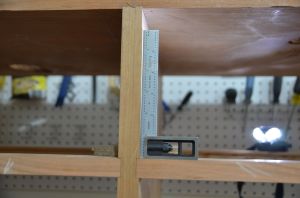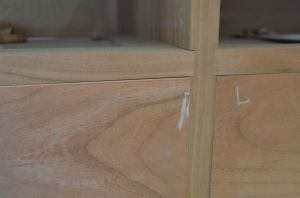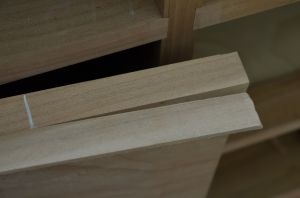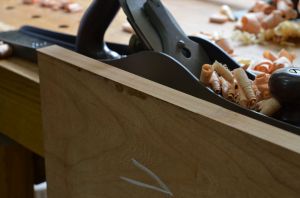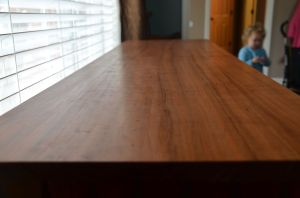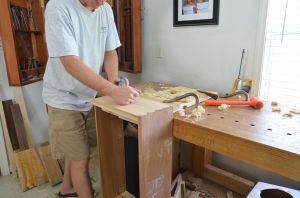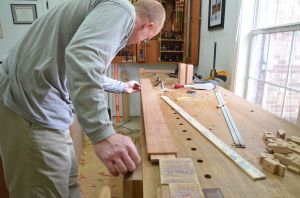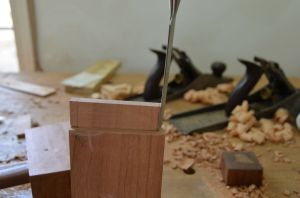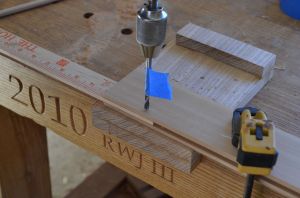The dresser is complete and finished, but what about the rest of the story? What happened in the background that caused me problems? Mistakes. Lots of mistakes. With this post I’ll attempt to be transparent with my biggest mistakes and recap how I “fixed” them. Maybe it will help someone else in their moment of frustration.
1 – With a previous post I showed how to fit an out of square back.
2 – In another post I showed how to fit drawer fronts to non-square drawer openings.
3 – Mortise/tenon malalignment in the vertical divider. Fix described in a previous post.
4 – Splits in the vertical divider. Fix? I planed both sides of the board (inside the case) smooth enough that the drawers did not stick during use. The splits are still there, but not visible unless the bottom drawers are removed.
5 – I also fixed a drawer front that was too short. One word – veneer. Can you see the thin piece of wood glued to the top of the drawer on the left? Look closer. While fitting the drawer front I removed more than planned.
I found a thin strip of color and grain matched cherry in my scrap pile.
I glued the “shop made veneer” on top of the drawer front (yay for blue tape and liquid hide glue). After a little clean up with a plane it was almost invisible when viewed from the top or front.
6 – One more fix. On one drawer I plowed the groove for the bottom too high (3/4 inch from the bottom rather than 1/2 inch). That would have been easily fixed by make those slips 1/4 inch taller and the back of the drawer 1/4 inch shorter, right? Well, I forgot about the back until after the drawer was glued up. It’s no problem to fix this with hand planes. I used a rabbet plane to remove that 1/4 inch. Thankfully the bottom pin was really big so the joinery was not compromised. This drawer will not be quite as deep as it’s mate, but I bet it will never be noticed.
I think I did this 18 inch wide cherry board proper justice (side piece). It determined the size of the case.
I did get a couple of things right. The design proportions look good to my eye, the dresser fits in our bedroom, and it holds lots of clothes. I was also able to make good use of some extra wide, beautiful cherry. All-in-all, the project turned out great despite the multitude of mistakes. My wife is happy with the piece and doesn’t know about any of these errors. Hopefully, I will have the presence of mind to avoid the temptation of pointing out these errors to anyone who compliments the piece. If you build things, you know how difficult it is to avoid these conversations.
“That is a really nice ____. Did you make it?”
“Yes. Thanks, but I really messed up the ____. Can’t you see it there, and here, and there?”
“Oh… yeah, I guess so, but it’s still really nice. I would love to have one.”
“Thanks, but I really wish I would have taken more care here, and not missed this here…”
Next time, do yourself a favor and stop with “Yes, thanks”. Your friends really don’t want to hear about these modest mistakes. They just want to know if you will build them one for free.
Bob Jones



